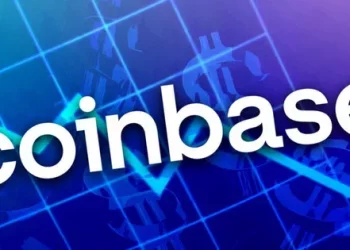Cryptocurrency exchanges are a vital part of the digital currency ecosystem, providing platforms for buying, selling, and trading various cryptocurrencies. One of the largest and most well-known exchanges is Binance. Whether you’re a seasoned trader or a newcomer to the world of cryptocurrencies, understanding the fees associated with using an exchange like Binance is crucial. Among these fees, withdrawal charges can significantly impact your overall trading experience and profitability. In this article, we’ll delve into how much Binance charges for withdrawals, factors affecting these fees, and how you can manage costs effectively.
Understanding Binance Withdrawal Fees
What Are Withdrawal Fees?
Withdrawal fees are charges imposed by cryptocurrency exchanges when you transfer your assets from the exchange to an external wallet or another platform. These fees are typically paid in the cryptocurrency you are withdrawing and are necessary to cover the network transaction costs associated with moving funds on the blockchain. On Binance, withdrawal fees vary depending on the cryptocurrency you’re withdrawing and the current network conditions.
Binance’s Withdrawal Fee Structure
Binance operates with a variable fee structure, meaning the withdrawal fee for each cryptocurrency is different. The exchange updates its fee schedule regularly to reflect changes in blockchain network costs and other factors. Generally, Binance charges a flat fee per withdrawal rather than a percentage of the withdrawal amount. This fee covers the cost of the network transaction required to complete the withdrawal.
Examples of Binance Withdrawal Fees
Here are some examples of withdrawal fees for popular cryptocurrencies on Binance as of the latest update:
Bitcoin (BTC): 0.0005 BTC per withdrawal.
Ethereum (ETH): 0.0015 ETH per withdrawal.
Binance Coin (BNB): 0.001 BNB per withdrawal.
Ripple (XRP): 0.25 XRP per withdrawal.
These fees are subject to change, and it’s essential to check the current fee schedule on Binance before making any withdrawals.
Factors Affecting Withdrawal Fees
Several factors can influence the withdrawal fees on Binance. Understanding these factors can help you plan your withdrawals more strategically.
Network Congestion
One of the primary factors affecting withdrawal fees is network congestion. When a blockchain network is highly congested, the cost of processing transactions increases. This is because miners prioritize transactions with higher fees, leading to an overall increase in the minimum fee required to get your transaction processed in a timely manner. For example, during periods of high demand, Bitcoin and Ethereum fees can spike significantly.
Cryptocurrency Type
Different cryptocurrencies have different underlying technologies and network costs, leading to varying withdrawal fees. For example, Bitcoin’s withdrawal fees are generally higher than those of smaller, less popular cryptocurrencies because Bitcoin transactions are often larger and more complex.
Exchange Policies
Binance may adjust its withdrawal fees based on internal policies, such as promoting certain coins or adjusting to market conditions. Occasionally, Binance may offer discounts or reduced fees for certain cryptocurrencies as part of promotional events or to encourage the use of Binance Coin (BNB).
User Account Tier
Binance offers different account tiers based on the user’s trading volume and BNB holdings. Higher-tier users may enjoy reduced withdrawal fees as part of their benefits. Holding a significant amount of BNB in your Binance account can also result in lower fees across various transactions on the platform, including withdrawals.
How to Check Binance Withdrawal Fees
To find the exact withdrawal fee for a particular cryptocurrency, follow these steps:
- Log in to your Binance account.
- Go to the “Wallet” section and select “Fiat and Spot.”
- Choose the cryptocurrency you wish to withdraw.
- Click on “Withdraw.”
- Enter the withdrawal address and amount.
- The withdrawal fee will be displayed before you confirm the transaction.
It’s advisable to check the fee before making a withdrawal, as fees can change based on network conditions and Binance’s internal updates.
Strategies to Minimize Withdrawal Fees on Binance
Withdraw Larger Amounts Less Frequently
Since Binance charges a flat fee per withdrawal, one effective strategy is to withdraw larger amounts less frequently. By consolidating your withdrawals, you can reduce the number of times you incur the fee. For example, rather than withdrawing a small amount of Bitcoin multiple times, it might be more cost-effective to wait until you have a larger amount and make a single withdrawal.
Utilize Binance Coin (BNB) for Fees
Binance offers discounts to users who pay fees with Binance Coin (BNB). While this discount primarily applies to trading fees, holding BNB can also provide other benefits that indirectly reduce your overall costs on the platform, including withdrawal fees. By using BNB to pay for transactions and maintaining a sufficient balance, you can maximize these benefits.
Monitor Network Congestion
As mentioned earlier, network congestion plays a significant role in determining withdrawal fees. By monitoring blockchain activity, you can identify periods of lower congestion when fees are reduced. Tools like blockchain explorers and fee tracking websites can help you gauge the best times to withdraw funds.
Consider Alternative Cryptocurrencies
If you find that withdrawal fees for a particular cryptocurrency are too high, consider converting your funds to another cryptocurrency with lower withdrawal fees. For example, if Ethereum fees are high, you might convert your ETH to XRP or BNB, which typically have lower fees, and then withdraw those funds. However, be mindful of potential exchange rate fluctuations and conversion fees when using this strategy.
Utilize Layer 2 Solutions
Some blockchains, like Ethereum, offer Layer 2 scaling solutions that can significantly reduce transaction costs. Binance may support these solutions, allowing you to withdraw funds at a lower cost. Check if Binance supports Layer 2 withdrawals for your chosen cryptocurrency, as this can be an effective way to minimize fees.
Comparison with Other Cryptocurrency Exchanges
Binance vs. Coinbase
Coinbase is another popular cryptocurrency exchange, and comparing its withdrawal fees with Binance’s can provide context. While Binance generally offers lower fees due to its global reach and high trading volume, Coinbase may charge higher withdrawal fees, especially for cryptocurrencies like Bitcoin and Ethereum. However, Coinbase does offer the convenience of withdrawing to bank accounts, which might appeal to users looking for fiat conversion.
Binance vs. Kraken
Kraken is known for its robust security features and a wide range of cryptocurrencies. When comparing withdrawal fees, Kraken’s fees are competitive but vary depending on the cryptocurrency. In some cases, Binance might offer lower fees, particularly for high-volume traders or those who hold BNB.
Binance vs. KuCoin
KuCoin is another exchange with a diverse offering of cryptocurrencies and low fees. Binance and KuCoin both offer competitive withdrawal fees, but KuCoin’s fees might be lower for certain niche cryptocurrencies. However, Binance’s overall user experience, liquidity, and fee structure often make it the preferred choice for many traders.
Potential Risks and Considerations
Fee Changes
Withdrawal fees on Binance are subject to change, often without prior notice. This can occur due to changes in network conditions, Binance’s internal policies, or shifts in the cryptocurrency market. It’s essential to stay informed and regularly check Binance’s fee schedule to avoid unexpected costs.
Security Concerns
While Binance is one of the largest and most secure cryptocurrency exchanges, no platform is immune to security risks. When withdrawing funds, ensure that you’re sending them to a secure wallet address, and double-check all transaction details before confirming. Using two-factor authentication (2FA) and other security measures can help protect your assets.
Regulatory Issues
Regulatory changes in various countries can impact how Binance operates, including its fee structure. For example, increased scrutiny or regulatory requirements might lead to higher fees or additional steps in the withdrawal process. Stay informed about the regulatory environment in your region and how it might affect your use of Binance.
Withdrawal Limits
Binance imposes withdrawal limits based on user verification levels. Unverified or partially verified users may have lower daily withdrawal limits, which could affect your ability to withdraw large amounts in a single transaction. Completing the necessary verification steps can help increase your withdrawal limits and reduce the need for multiple transactions.
See also: How to Invest in Chinese Digital Currency
Conclusion
Understanding how much Binance charges for withdrawals is crucial for managing your cryptocurrency investments effectively. While fees vary depending on the cryptocurrency and network conditions, Binance generally offers competitive rates compared to other exchanges. By adopting strategies like withdrawing larger amounts less frequently, using Binance Coin (BNB) for fees, and monitoring network congestion, you can minimize your withdrawal costs.
Moreover, it’s essential to stay informed about Binance’s fee structure and any potential changes that may affect your withdrawals. Comparing Binance’s fees with other exchanges can also help you make informed decisions about where to trade and withdraw your assets.
As the cryptocurrency market continues to evolve, staying aware of fees and associated costs will help you optimize your trading experience and maximize your profits. By taking advantage of Binance’s features and strategies, you can effectively manage your withdrawal fees and ensure a smoother, more cost-effective trading journey.
Related topics:
Which Countries Have Central Bank Digital Currency (CBDC)?

















